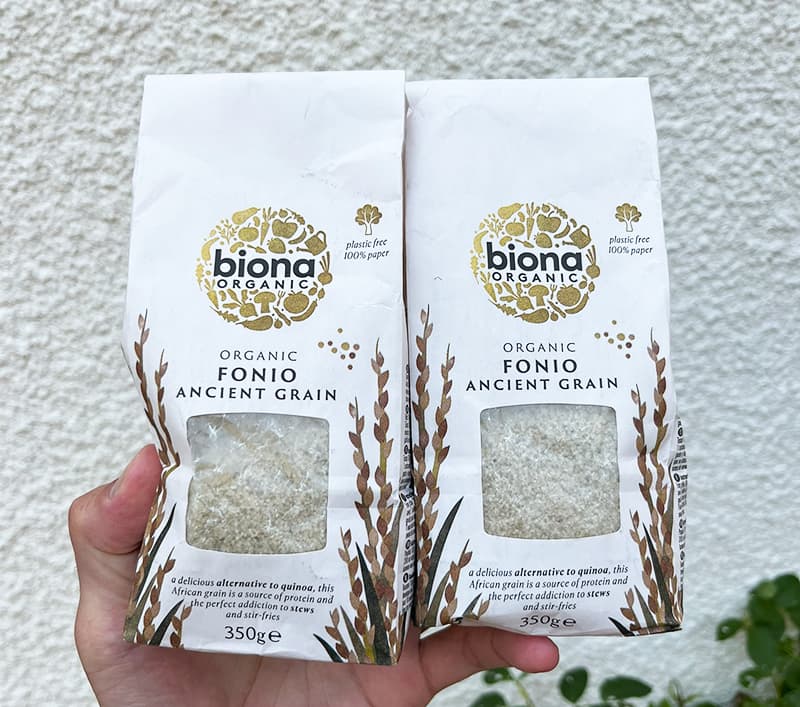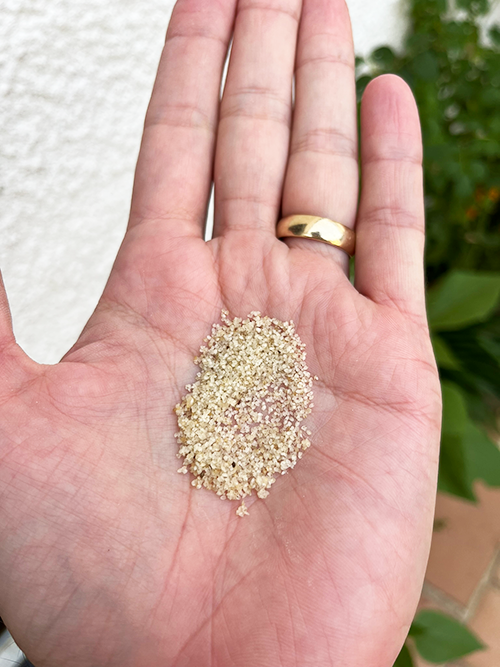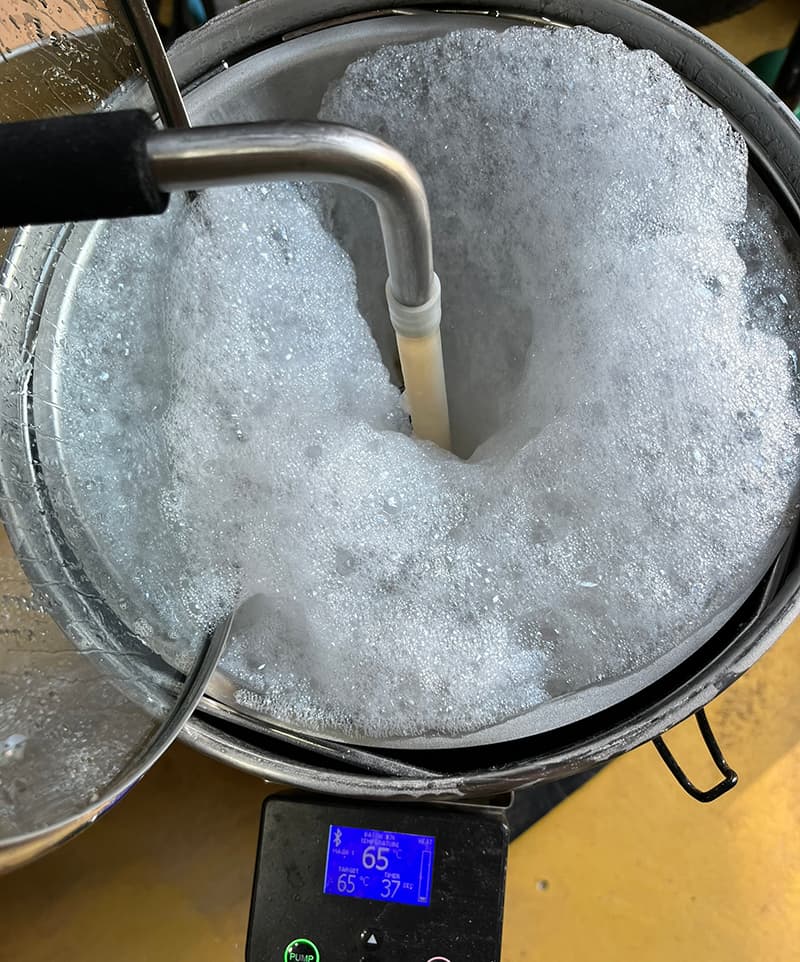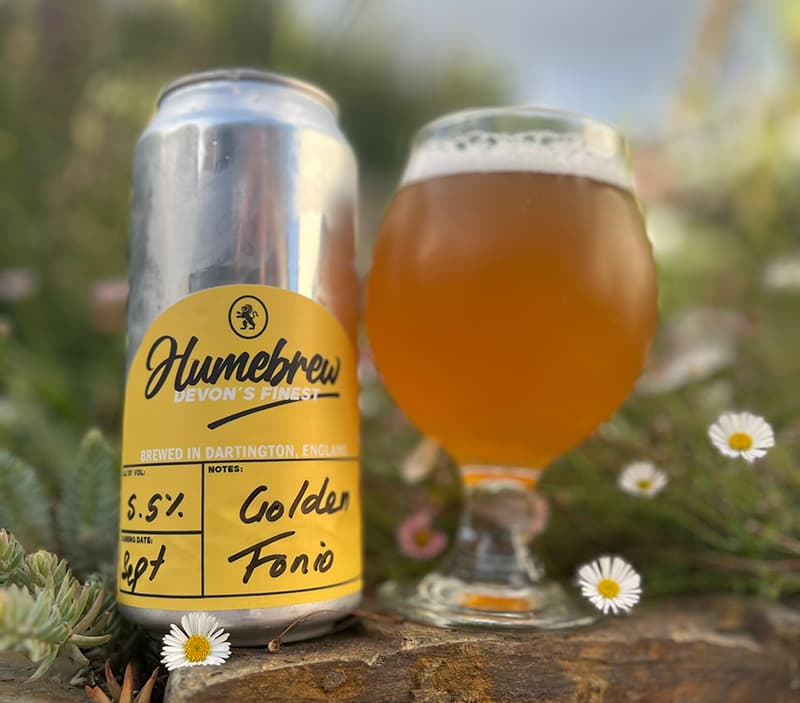Brewing with Fonio: A Sustainable Grain Experiment
After listening to a fascinating episode of the Craft Beer & Brewing podcast featuring Garrett Oliver (Brooklyn Brewery) and Vinnie Cilurzo (Russian River), I was inspired to experiment with a unique ingredient: fonio. This ancient West African grain is not only sustainable and fast-growing, but it also doesn’t require milling and is said to impart Sauvignon Blanc-like flavours - crisp, fruity, and slightly herbal.

As someone who loves trying new ingredients in brewing, Fonio immediately caught my attention. To my surprise, it was easy to source here in the U.K., with several online retailers offering it. In this article, I share my experience brewing a Belgian-style Saison using Fonio, along with some insights and lessons learned along the way.
The Recipe
Let's get brewing! The recipe below is suited for my Grainfather G30, but it can be scaled to suit your needs depending on your setup.
Batch Size: 5 gal
ABV: 5.5%
Boil Time: 60 mins
OG: 1.050
FG: 1.009
IBUs: 24
Malt Bill
| Name | Amount |
|---|---|
| Pale Malt Best (Simpsons) | 85% |
| Fonio | 15% |
Hops
| Name | Amount | Time | Use | Form |
|---|---|---|---|---|
| Magnum | 10 g | Boil (60 min) | Boil | Pellet |
| Rakau | 100 g | Hopstand (0 min) | Hopstand | Pellet |
Yeast
| Name | Lab | Temperature |
|---|---|---|
| Farmhouse | Lallemand | 25 Celsius |
Let's get brewing
On brew day, I fired up my Grainfather and aimed for a strike temperature of 65°C. I started by adding the Pale Malt grains to the mash tun, holding back the fonio initially. Since the Grainfather recirculates the mash liquor, I was concerned that the tiny Fonio grains might block the pump. Once the base malt was in, I gently layered the Fonio on top.
If you’ve never seen Fonio before, the grains are incredibly small - almost like brown sugar or quinoa. You can see from the image below just how fine they are.

During the mash, I noticed an unusually high amount of foam - far more than I typically see. It didn’t seem to affect the original gravity (OG) or fermentation, but it was definitely a standout observation.

Once the mash was complete, I added the bittering charge of Magnum hops and started the boil. After the 60 minutes of boil time was complete, I added the hops to the whirlpool at around 80-90 degrees for around 20 mins before cooling the wort with my counterflow chiller.
Once the wort was at pitching temperature, I pitched the yeast starter. Before racking to my fermenter, I took a reading of the original gravity (OG) which came in at just over 1.050 - right on target.
The waiting game
With the airlock bubbling away, I patiently waited for my brew to be ready.
I have been using my Tilt Hydrometer to track the progress of my brews lately. The chart below gives you an idea of the fermentation chart for this beer. In the image below, the red line represents the gravity and the blue line is the temperature.

I pitched the wort onto a healthy yeast slurry from a previous brew, and fermentation took off quickly. The beer was fully fermented in just six days, which is fairly typical for a Saison, especially with an active yeast culture.
Once fermentation was complete, I soft-crashed the beer to help settle any remaining yeast and trub, then moved on to packaging. For this batch, I decided to can condition rather than force carbonate with CO₂. This method not only aligns with the traditional farmhouse approach but also allows the yeast to naturally carbonate the beer in the can - adding a touch of authenticity to the final product.
Tasting

Appearance - A lovely golden straw coloured beer with a slight haze to it. I wasn't sure what to expect, but its beautiful. A fluffy head that lingers as expected. I aptly named this beer "Golden Fonio".
Aroma - The nose is bready, with gentle phenolic spice and a touch of tropical fruit. I suspect the Rakau hops in the whirlpool contributed to the fruity character, alongside the unique qualities of the Fonio grain.
Taste - This beer delivers flavours of stone fruit, pear, and a slightly honeyed sweetness. It finishes relatively dry, yet retains a subtle sweetness that balances beautifully with the crisp bitterness. It’s fresh, clean, and incredibly drinkable - an absolute crusher!
I’m genuinely pleased with how this beer turned out. Brewing with Fonio was a bit of a leap into the unknown, but I’ll definitely be using it again. I can imagine it working wonderfully in a rustic lager.
Summary
Fonio isn’t just a fascinating grain to brew with - it’s also a sustainably grown crop that requires no irrigation, fertilizer, pesticides, or fungicides. It can even make land considered “non-arable” productive. Brewing is an energy-intensive process that can be tough on the environment, so any small steps we can take as brewers to reduce our impact are worth exploring - especially when they result in great tasting beer.
If I had to point out one drawback, it would be the cost. Fonio is currently more expensive than barley malt here in the U.K., but I’m hopeful that as interest grows, the price will become more accessible.
If you use Brewfather as your brewing software of choice, I've also made the recipe publicly available for you to try yourself.